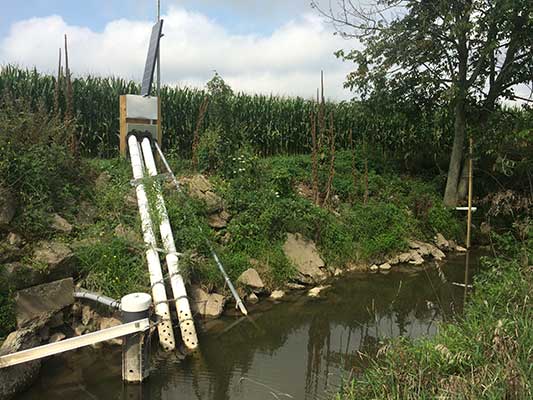
The Nature Conservancy Celebrates World Ag Day & World Water Day Working with Farmers for Fresh Water

INDIANAPOLIS – Mother Nature’s ability to clean water in the Wabash River is getting a boost. Thanks to funding from Nestlé Purina PetCare Company, The Nature Conservancy is working with farmers in southwestern Indiana to improve water quality within this river system.
“Our country celebrates two different special days this time of year, but increasingly, as we raise awareness about both, we raise awareness about their importance to each other,” said Mike Dunn, director of freshwater programs for The Nature Conservancy in Indiana.
“We celebrate National Ag Day on March 20, which recognizes agriculture’s role in American life. Just two days later on March 22, we observe World Water Day, which focuses attention on the importance of water. But as populations and pressures on our natural resources increase, so too does our need to look at how we can sustainably manage both.”
The Nature Conservancy has deemed the Wabash River watershed one of its highest priorities for conservation work. Excessive nutrients and sediments entering the river make their way to the Mississippi River and ultimately the Gulf of Mexico, contributing to the hypoxic “dead zone.”
The Nature Conservancy has received an additional $500,000 from Nestlé Purina to be contributed over the next five years, which builds on the company’s original $120,000 contribution in support of the project, to help area farmers to address nutrient-loading and water quality issues facing the Wabash River.
In the next five years, according to Dunn, the Conservancy plans to restore at least 500 acres of floodplain agricultural land that is most vulnerable to erosion, flooding, and loss of nutrients into waterways. This work will focus on the Lower Wabash River, where the opportunity to intercept soil and nutrients coming down the river is greatest.
“Nestlé Purina is committed to improving the land where we source high-quality grain for our complete and balanced pet food recipes,” said Diane Herndon, Senior Manager, Sustainability, Nestlé Purina. “By working with partners and supporting the work of The Nature Conservancy, together we’re supplementing the good stewardship already underway by farmers to keep nutrients on their land by also reducing nutrient levels in the Wabash waterway.”
In addition to the floodplain restoration, the funding from Nestlé Purina will also help install a United States Geological Survey “super gage” at the confluence of the Wabash and Ohio Rivers to track and measure system-wide water quality trends and progress. The gage will provide real‐time, continuous measurements of physical and chemical water characteristics every 15 minutes, 24 hours a day, 365 days a year.
“The super gages generate powerful, big data on system‐wide water quality trends, including nutrient loading,” said Dunn. “Farmers, the commodity associations, state and federal partners, academic institutions, and other conservation organizations have long been deeply aligned on the need for better data on the Wabash.”
“By helping farmers restore and steward their marginal floodplain lands and investing in state‐of‐the‐art equipment needed to track system‐wide progress, Nestlé Purina’s investment will be a powerful catalyst to mobilize people, partners, dollars, and data for conservation progress and water quality improvement in the Wabash River,” Dunn said.
The Nature Conservancy is a global conservation organization dedicated to conserving the lands and waters on which all life depends. Guided by science, the Conservancy works to create innovative, on-the-ground solutions to the world’s toughest challenges so that nature and people can thrive together. Learn more online at nature.org/indiana.
# # #
The Nature Conservancy is a global conservation organization dedicated to conserving the lands and waters on which all life depends. Guided by science, the Conservancy works to create innovative, on-the-ground solutions to the world’s toughest challenges so that nature and people can thrive together. Learn more online at nature.org/Indiana.